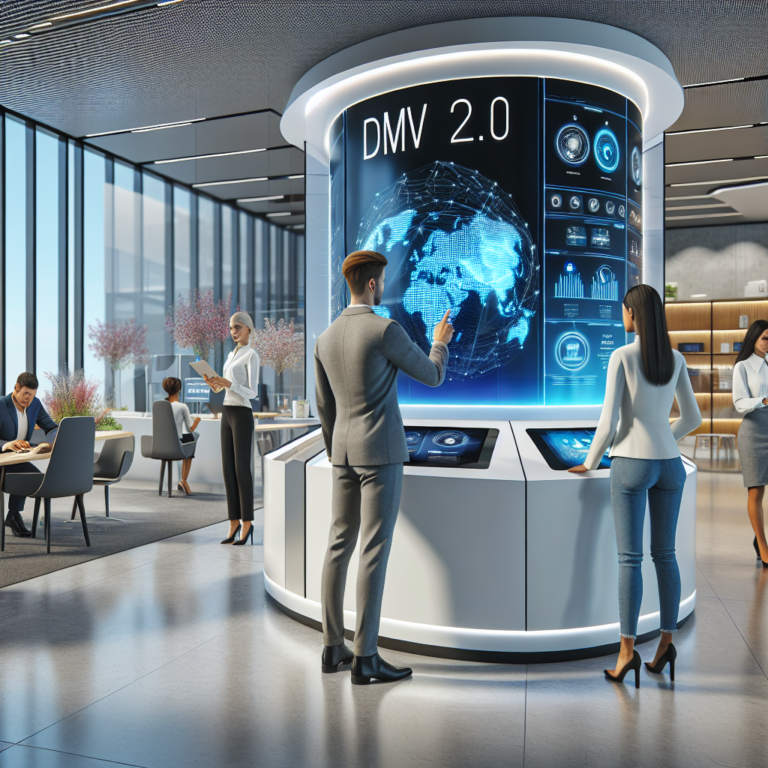For decades, the Department of Motor Vehicles (DMV) has been synonymous with long lines, frustrating wait times, and an overall less-than-pleasant experience. However, a new wave of digital innovations is sweeping through the DMV landscape, transforming it from a bureaucratic labyrinth into a streamlined service hub, aptly coined "DMV 2.0." As we embrace a more connected and tech-savvy world, these advancements are not just improving efficiency but are also enhancing customer satisfaction and accessibility. Let’s explore how technology is reshaping the traditional DMV experience.
The Shift Towards Digital Services
Online Appointments and Services
Gone are the days of waking up at dawn to secure a spot in line. Many DMVs now offer online appointment systems that allow customers to schedule their visits at their convenience. This feature has significantly reduced the hassle of waiting in line, enabling individuals to plan their day around their DMV needs rather than the other way around.
Additionally, numerous services can now be accessed online. From renewing registrations and applying for a driver’s license to updating address changes, many tasks can be completed from the comfort of your home. This transition to digital platforms minimizes in-person visits and decreases the overall foot traffic within DMV offices.
Mobile Applications
In response to the increasingly mobile-first society we live in, many DMVs have developed user-friendly mobile applications. These apps provide a one-stop-shop for various services, including real-time wait times, appointment scheduling, and access to important documents. With features like push notifications for renewal reminders and the ability to pay fees directly through the app, these innovations make managing vehicle registration and licensing simpler and more efficient.
Enhancements in Customer Experience
Streamlined Processes
Digital technologies are not only about moving services online; they also enhance the efficiency of DMV operations. Advanced queue management systems use real-time data to optimize staffing and reduce wait times. By integrating digital check-in systems, customers can now pre-register before arriving, further minimizing their time spent in the office.
Virtual Services
Some DMVs have taken the leap into virtual reality. Through the use of video conferencing technology, customers can interact with DMV representatives remotely, addressing their queries without needing to step foot in a physical office. This option is particularly beneficial for those with mobility issues or individuals residing in rural areas who may find it cumbersome to travel to a DMV location.
Enhanced User Experience Through AI
Artificial Intelligence (AI) is revolutionizing customer service across industries, and the DMV is no exception. Many agencies are now implementing AI-driven chatbots on their websites and mobile apps to assist customers with frequently asked questions and navigate services. These chatbots are available 24/7, providing instant assistance and freeing up human agents to focus on more complex inquiries.
Modernizing Identification and Security
Digital IDs
With identity theft and data security being major concerns in today’s digital landscape, DMVs are making strides in modernizing identification methods. Some states are rolling out digital identification cards that reside within secure mobile applications. This innovation allows individuals to access their driver’s licenses anytime from their smartphones while benefiting from enhanced security features, such as biometric authentication.
Blockchain Technology
Blockchain technology is making its entrance as well, particularly regarding vehicle registration and title transfers. This decentralized ledger system not only streamlines the verification process but also enhances security. By utilizing blockchain, DMVs can minimize the risk of fraud while ensuring that records are tamper-proof and easily accessible.
Conclusion
The transformation from DMV 1.0 to DMV 2.0 is more than just a shift in technology; it represents a cultural shift towards customer-centric service and efficiency. As states continue to invest in these digital innovations, the DMV experience is poised to become even more seamless and user-friendly. While traditional frustrations may still linger in some areas, the promise of a modernized DMV is clear: convenience, efficiency, and satisfaction. The road ahead looks bright, paving the way for a future where the DMV is no longer a dreaded destination but a place to receive crucial services with ease and confidence.


